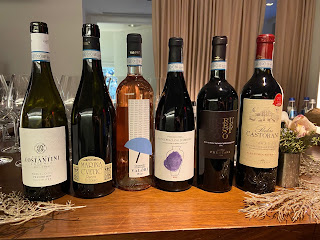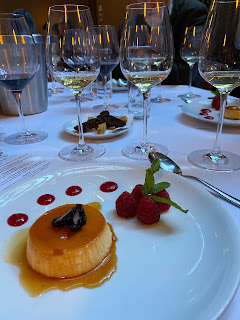Dave and Christi Ficeli met while working at the historic California winery, E. & J. Gallo. In 2021, they fufilled their dream of owning their own piece of Napa Valley wine history by acquiring Goosecross winery, which they had been managing since 2013. Since the beginning of their involvement with the winery, the couple was determined to create a special destination that offers memorable, terroir-driven wines.
Essential to this vision is Goosecross winemaker Bill Nancarrow, a New Zealand native whose illustrious wine career has taken him all over the world. His most recent position prior to Goosecross was being executive winemaker of Duckhorn Wine Company's Napa Valley properties. After rising to the executive ranks, Bill said he wanted to get his hands dirty, drive a tractor, and make wine again. Goosecross gave him that chance. Bill is passionate about selecting vineyard sites, as Yountville has diverse soil profiles in every direction. With the Ficeli's vision and Bill's winemaking skill, Goosecross has blossomed.
I met Dave and Bill at a recent media dinner in Manhattan at Marta, where I was able to hear about how Goosecross has been transformed into a destination winery focused on sustainable viticulture and complex, balanced wines. They poured a number of wines that we paired with the restaurant's crispy pizzas with a variety of fun toppings - from fresh corn to black truffles. Here are some highlights from the wines we sampled:
Goosecross 2019 State Lane Vineyard Merlot - State Lane is the vineyard on the Goosecross property which features diverse alluvial soils and temperatures moderated by the San Francisco Bay. This Merlot combines fruit from two distinct blocks, producing a wine with ripe cherry aroma and flavor, bright acid, fine-grained tannins, and a whiff of caramel on the finish.
2019 Goosecross Holly's Block Cabernet Sauvignon - The vineyard block is named after Christi's grandmother, Holly, and it's a winery favorite. 2019 was a generous year weather-wise, and this is reflected in the rich blackberry jam flavors, silky tannins, and persistent finish. I was delighted by this elegant, plush wine.
2019 Goosecross State Lane Aeros - The best of the best from the State Lane Vineyard, this wine is blend of 65% Cabernet Sauvignon and 35% Merlot. This is a structured wine with great ageing potential that was still drinking well at its young age. I found plum and blackberry on the nose and palate and enjoyed its rich mouthfeel. The wine is limited to 145 cases.
Wines may be ordered directly online, but the best way to experience the wines is by visiting them at the welcoming tasting room or on the patio in Napa Valley. Goosecross offers wine tastings, wine and food pairings, and special events. Find out more on the winery's website.





































